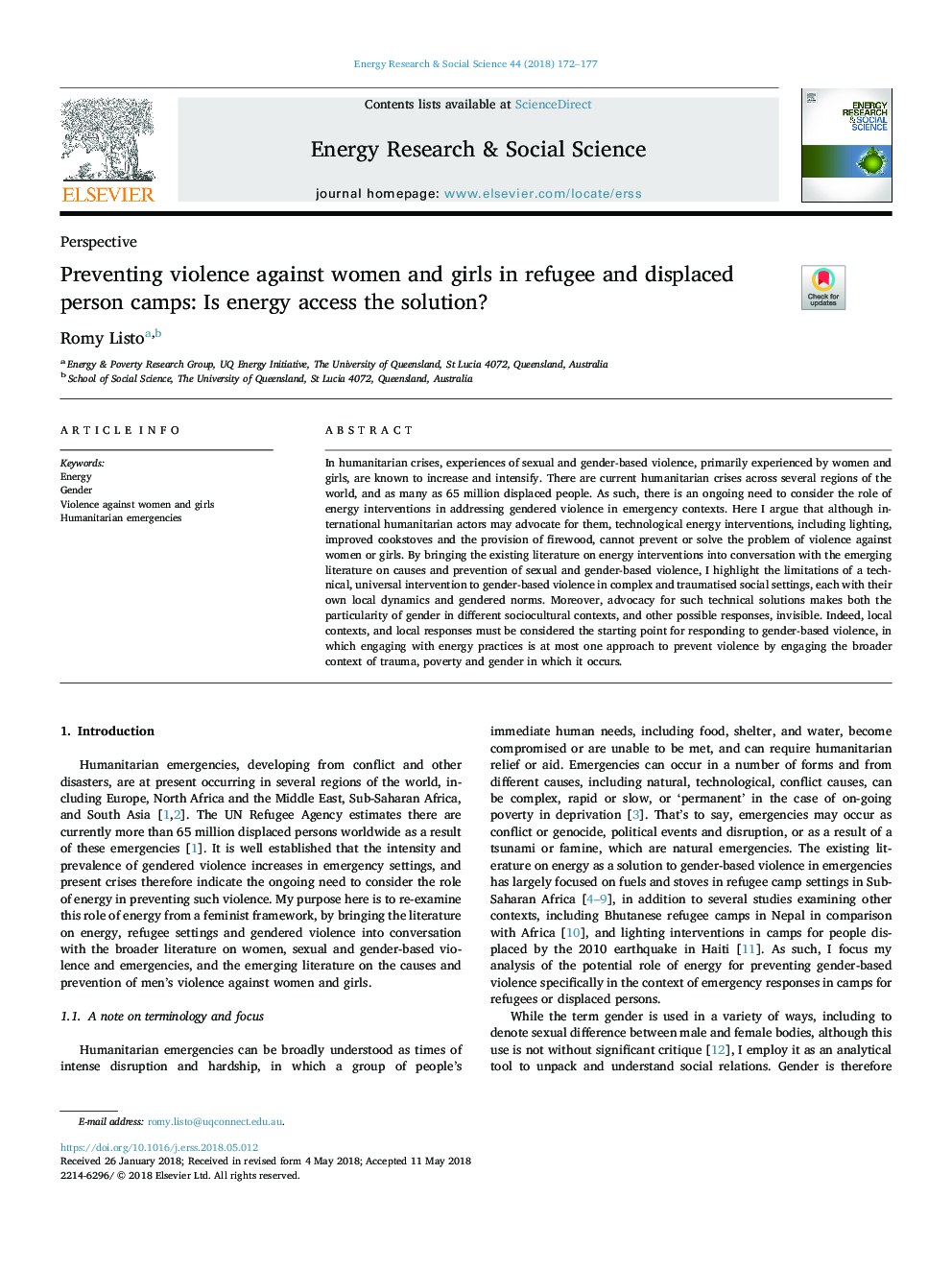| Article ID | Journal | Published Year | Pages | File Type |
|---|---|---|---|---|
| 6557137 | Energy Research & Social Science | 2018 | 6 Pages |
Abstract
In humanitarian crises, experiences of sexual and gender-based violence, primarily experienced by women and girls, are known to increase and intensify. There are current humanitarian crises across several regions of the world, and as many as 65 million displaced people. As such, there is an ongoing need to consider the role of energy interventions in addressing gendered violence in emergency contexts. Here I argue that although international humanitarian actors may advocate for them, technological energy interventions, including lighting, improved cookstoves and the provision of firewood, cannot prevent or solve the problem of violence against women or girls. By bringing the existing literature on energy interventions into conversation with the emerging literature on causes and prevention of sexual and gender-based violence, I highlight the limitations of a technical, universal intervention to gender-based violence in complex and traumatised social settings, each with their own local dynamics and gendered norms. Moreover, advocacy for such technical solutions makes both the particularity of gender in different sociocultural contexts, and other possible responses, invisible. Indeed, local contexts, and local responses must be considered the starting point for responding to gender-based violence, in which engaging with energy practices is at most one approach to prevent violence by engaging the broader context of trauma, poverty and gender in which it occurs.
Related Topics
Physical Sciences and Engineering
Energy
Energy (General)
Authors
Romy Listo,
